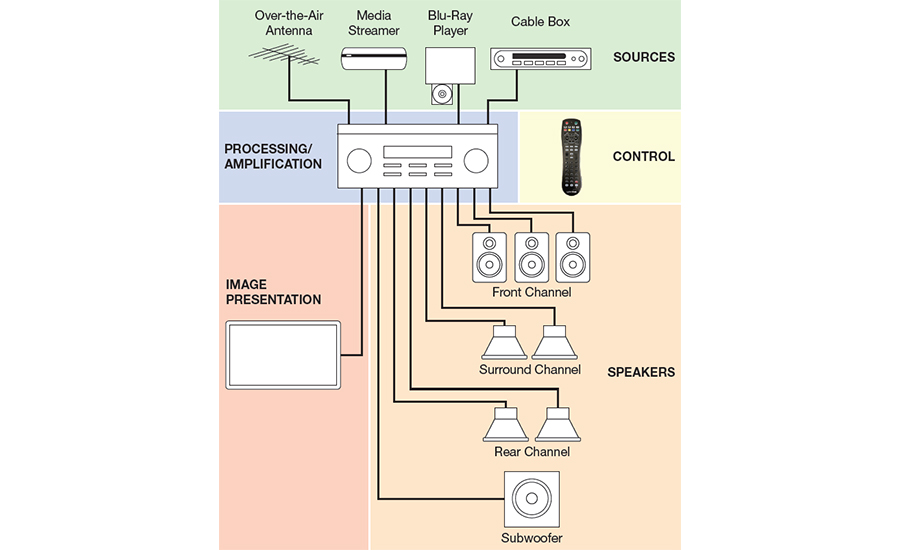Living in today’s uncertain world brings many challenges and changes every day, but it also brings new opportunities for those willing to expand their business offerings and learn new skills. Security companies are trusted by owners to protect and care for their families through system installation and monitoring. With the desire and commitment to stay home and spend time together, what better way is there than enjoying entertainment at home. Incorporating the cinema experience in a home can be as simple as adding surround sound to an entertainment system or installing a decked-out dedicated home theater.
People have always liked being entertained. Today, movies and other digital media are global and ubiquitous, genres are inexhaustible, production technologies are sophisticated, and revenues are exploding.
In today’s world, movie watching is an integral part of everyday life with streaming media available everywhere. Viewing blends into the décor with a large, flat-screen display or projector and screen, in-ceiling speakers and/or a sound bar, and simple control with an integrated remote or by an app on a mobile device. Viewers can experience a movie the way the director intended and “bring Hollywood home,” AND your security installation company can make this all happen.
Understanding the technologies and principles behind a well-designed and installed home theater contribute to the success of a project. There are five elements to a home theater:
- One or more sources — cable or satellite TV; streaming media; digital video recorder (DVR); Blu-ray/DVD player; game console
- Audio/video processing — amplification, formatting, and signal routing
- Image presentation — display or projector/screen
- Multiple speakers
- Control — integration and management of components
Other items such as power conditioning, furniture, acoustic treatments, lighting control, environment management and sensory experience may be included. The listening experience in a home theater is created by a minimum of five speakers and the surround sound format being used. The #1 rule when connecting sources to equipment is to always use the output that delivers the highest quality signal.
There are proven steps to streamline the design process of a home theater that should be followed. First, start by consulting with the customer, lay out the room to scale for display/screen placement, select image presentation, select surround sound format, choose speakers, processing/amplification components, and integrated control method. Installation of a home theater also follows proven steps, with known troubleshooting tools and techniques.
Interested in exploring the home theater opportunity? Two great resources cover what is needed to design and deliver home theater. Check out a hard copy, full-color book new this year, “Audio, Video, and Streaming Media Technologies” by yours truly, Helen Heneveld, at $45 plus shipping; it’s a must for every reference library. Also consider enrolling in the 4-hour online course, Home Theater Technologies Explained, with section quizzes and a final test.








